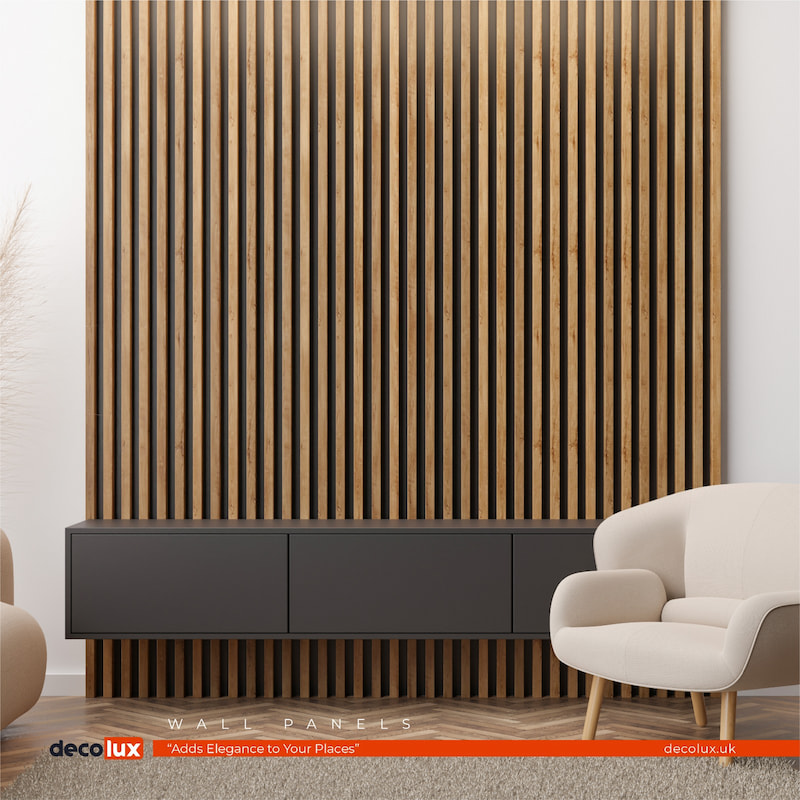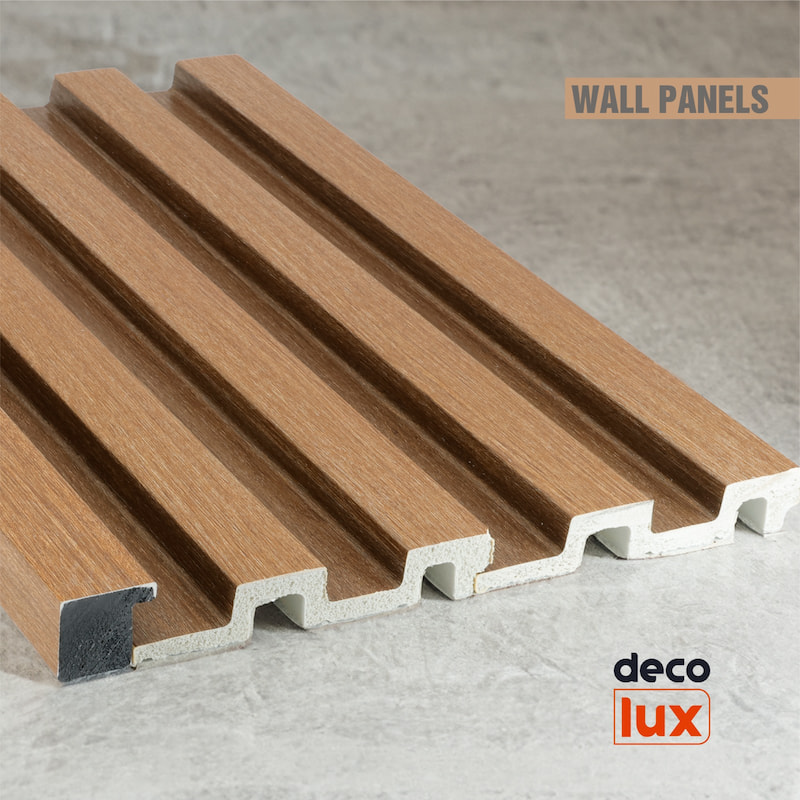Budget-Friendly Wall Paneling Ideas to Transform Your Space
Budget-Friendly Wall Paneling Ideas to Transform Your Space
Tired of plain walls but don't want to break the bank to upgrade them? You're not alone. Many homeowners are on the lookout for affordable ways to spruce up their interiors, and wall paneling offers an ideal solution. Not only does it add style and texture, but it's also a practical choice for enhancing the durability of your walls. In this guide, we'll explore the cheapest ways to achieve stunning wall paneling results without stretching your budget too thin.

DIY Wall Paneling for Affordable Home Makeovers
Wall paneling used to be reserved for high-end homes and commercial spaces, but that's no longer the case. With a plethora of DIY options available, anyone can achieve a custom look without hiring a contractor. The key is to select the right materials and techniques that fit both your style and budget.

One popular DIY approach is using reclaimed wood or pallet planks. These materials can often be sourced for free or at a minimal cost from local warehouses or crafting communities. By sanding and staining these planks, you can give them a polished look that rivals expensive wood paneling. This method not only saves money but also adds a rustic charm to your space.
Another cost-effective option is beadboard paneling. Beadboard sheets are widely available at home improvement stores and are incredibly easy to install with adhesive or nails. They provide a classic wainscoting look that adds an element of sophistication to any room. Plus, the lightweight material makes it a breeze to handle during installation.
Affordable Wall Panels for Bathrooms
Bathrooms can greatly benefit from wall paneling, especially in areas prone to moisture. However, traditional materials like tile can be expensive. Thankfully, there are budget-friendly alternatives that offer similar benefits without the hefty price tag.

Laminate wall panels are a fantastic choice for bathrooms. They mimic the appearance of tile or stone at a fraction of the cost and are highly resistant to water damage. Installation is straightforward with tongue-and-groove systems, making it an ideal weekend project for homeowners.
For a more contemporary look, consider acrylic wall panels. Available in various colors and finishes, acrylic panels are not only affordable but also easy to clean and maintain. They provide a seamless, sleek appearance that can modernize any bathroom quickly.
Cost-Effective Wall Panels for Kitchens
Kitchens endure constant wear and tear, making durable wall coverings essential. Classic choices like ceramic tiles can be expensive, but there are cheaper alternatives that still deliver on style and protection.
Vinyl wall panels are a budget-savvy option for kitchen spaces. They are easy to clean and resistant to stains and moisture, making them perfect for busy cooking areas. Additionally, vinyl panels come in a wide range of designs, including faux tile and wood, allowing you to achieve your desired look.
Corrugated metal paneling can also serve as an inexpensive yet stylish option for kitchens. It brings an industrial feel to the room, is durable, and straightforward to install. This material is great for backsplashes or accent walls, providing a unique contrast to traditional kitchen designs.
Are PVC Wall Panels Cheap?
When considering affordable wall paneling, PVC panels often come up in discussions due to their cost-effectiveness and versatility. They are particularly appealing for homeowners on a budget looking for a quick and easy installation process.

PVC panels are generally cheaper than materials like wood or tile. They are lightweight, making them easy to cut and handle, which reduces labor costs if you choose to hire help. Additionally, they come in a variety of textures and colors, enabling customization to suit different tastes.
Beyond affordability, PVC wall panels are appreciated for their low maintenance. They are waterproof and resistant to mold and mildew, making them suitable for high-humidity areas like bathrooms and kitchens. Their durability ensures that your initial investment stretches far into the future.
Evaluating MDF Wall Panels for Budget Projects
MDF (Medium-Density Fiberboard) wall panels offer another economical option worth exploring for anyone looking to panel walls on a tight budget. But how do they stack up in terms of cost-effectiveness?
MDF panels are typically less expensive than solid wood, making them an attractive choice for those seeking a wood-like finish without the associated costs. They are smooth and easy to paint or stain, allowing for a customizable look tailored to your home’s aesthetic.

While MDF panels are budget-friendly, it's important to note that they aren't as moisture-resistant as some other options. Therefore, they are best suited for areas less exposed to water, such as living rooms or hallways. Proper sealing and finishing can help mitigate moisture issues, extending their lifespan and maintaining their appearance.
Choosing the Right Material for Your Needs
The secret to affordable wall paneling lies in selecting the right materials that align with your functional needs and stylistic goals. Consider the environment where the panels will be installed—whether it's a moisture-prone bathroom or a high-traffic kitchen—and weigh the pros and cons of each material.
Each type of panel offers its own set of advantages and considerations, from cost and installation ease to durability and aesthetic appeal. By thoroughly assessing your space and doing a bit of research, you can make an informed decision that checks all your boxes.
Tools and Tips for a Successful Installation
Equipped with the right tools, even beginner DIY enthusiasts can successfully install wall panels. Start by gathering essentials such as a level, measuring tape, saw, adhesive, nails, and a nail gun. Precise measurements and planning are crucial to avoiding costly mistakes and material waste.
Before installation, ensure the wall surface is clean and free of debris. Take the time to measure twice and cut once, confirming that each panel fits perfectly in its designated space. For adhesive installations, applying even pressure across the panel ensures a strong bond.
Enlisting a helping hand can also make the process smoother, particularly for larger panels or ceiling applications. A second pair of hands can steady the panels, making the installation more efficient and less stressful.

Maintenance Tips to Maximize Longevity
Once your panels are up, maintaining them is key to preserving their appearance and function over time. Regular cleaning prevents build-up of dust and grime, which can dull their finish and shorten their lifespan.
For most panels, a simple wipe-down with a damp cloth and mild detergent is sufficient for routine cleaning. Avoid abrasive cleaners, which can scratch or damage the surface. Consistent maintenance not only protects your investment but also keeps your panels looking fresh and inviting.
How to Mix and Match Panel Styles
Incorporating a mix of panel styles can add depth and character to your space while sticking to a budget. Consider combining materials like beadboard with corrugated metal for an eclectic yet cohesive look.
Mixing different textures and colors can also make a small room appear larger or add warmth to a stark space. Experimenting with various layouts, such as vertical and horizontal installations, can further personalize your design.
Don't be afraid to get creative with panel placement; accent walls, ceilings, and even built-in shelving can all benefit from the addition of budget-friendly panels. The possibilities are endless, limited only by your imagination.
Budget-Friendly Paneling Trends
Staying informed about current trends can inspire your wall paneling project and ensure your choices remain timeless. Geometric patterns and textured finishes are popular for adding visual interest without overwhelming the space.
Earthy tones and natural materials are also trending, offering a warm and inviting feel without requiring a significant budget. These trends can be achieved affordably with options like laminate or MDF panels, providing a stylish yet economical approach.
While trends can guide your design decisions, remember that personal preference is the ultimate trendsetter. Choose styles and materials that resonate with you, creating a space that feels uniquely yours.





